#climate collapse
Text
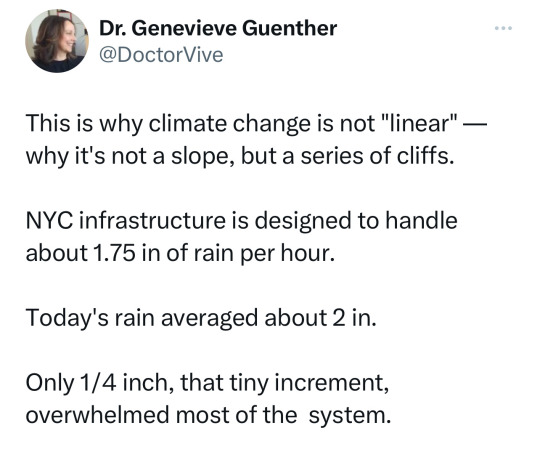






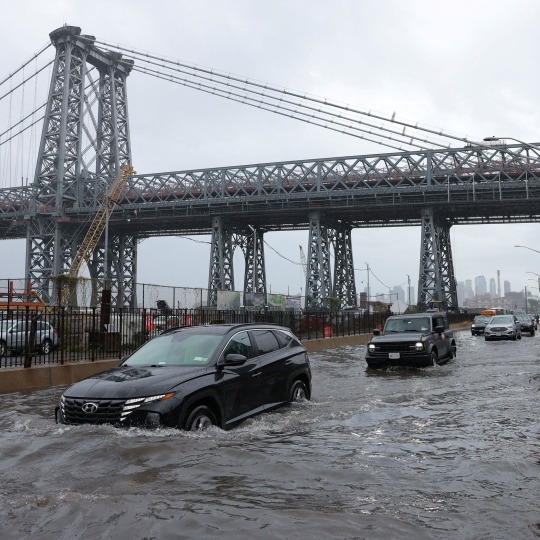
Nothing to see here, just fire + floods + climate change
#politics#climate change#climate crisis#global warming#nyc#nyc flooding#nyc floods#climate collapse#civil engineering
29K notes
·
View notes
Text
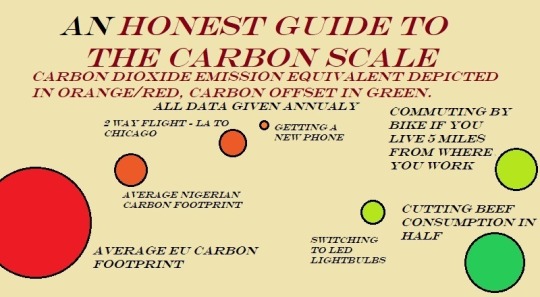
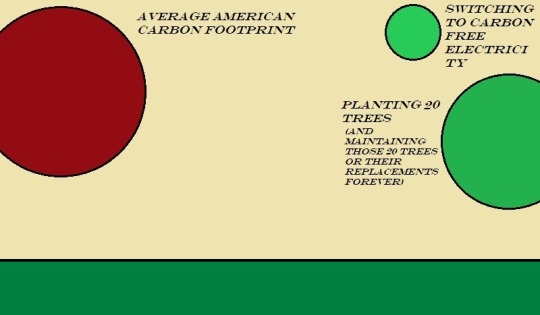














Sorry for the bad photo quality, Tumblr doesn't like posts this long.
#ramblings#politics#communism#socialism#climate change#not a reblog#when our turn comes#we shall not make excuses for the terror#environment#enviromentalism#carbon emissions#carbon footprint#global warming#climate collapse#anti capitalism#radical left#left wing#long posts#long post#color of the sky#hot take#this took like 20 minutes to upload because Tumblr kept crashing#and like 90 minutes to make
43K notes
·
View notes
Text
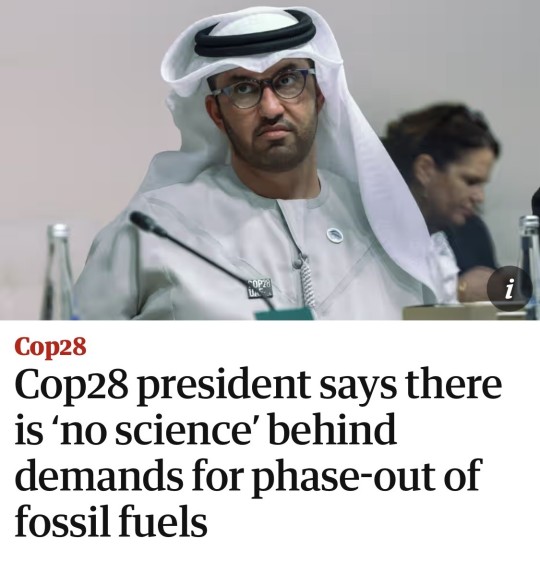
These fuckers are content to watch us die.
This bullshit is going to condemn our species to extinction unless we find a way to depose these sociopaths.
#cop28 #copOut #ClimateEmergency #ClimateCrisis #ClimateChange
#humza yousaf branded hypocrite for jetting to cop28 in dubai while his government misses emissions targets#cop28 climate summit#cop28climateconference#cop28 president#cop28#climate change#climate crisis#climate action#climate emergency#climate catastrophe#climate chaos#climate collapse#environmentalism#ausgov#politas#auspol#tasgov#taspol#australia#fuck neoliberals#neoliberal capitalism#anthony albanese#albanese government#environmental activism#environmental#environment#enviroment art#environmetalists#enviromental#eat the rich
186 notes
·
View notes
Text

#covid#ableism#antifascism#anticapitalism#anarchism#queer cripple#punks wear masks#wear a mask#eugenics#genocide#free palestine#free sudan#free west papua#climate collapse#death to america#vinay krishnan#acab
57 notes
·
View notes
Text
If we discovered a secret core on the moon made of oil, no government on the planet would stop companies from going up there and stealing all the uber-rare moon juice.
Two days after work on the NewMoon oil field was complete, the best of earth's scientists would release a detailed paper explaining how this will explode the moon and put up a website counting down until the day the moon explodes, and the news would be a debate on how space jobs can expand the economy and help the middle class and How You Can Reduce Your Oil Use to Save the Moon!
And as we got closer to #Moongate the moon would start rumbling and bits of it would start crashing into the earth and people would write thinkpieces about how international commerce can adapt without tides, and articles about how to build #Moongate survival bunkers, and poems about the moon watching humans through history and children who will never know the moon.
Nothing would be done. The counter would hit zero. The moon would explode. The planet would be buffeted by debris for days and the smoke would cause another Year Without A Summer and human lives would be lost and thousands of species would go extinct. Anyone who tried to take real action to save the moon would be arrested or shot.
We would lose our moon. For profit.
#blah blah blah#we live in a dystopia#dystopia#doomerism#climate collapse#i don't know how to fix this. i don't have an answer. i don't know how we could save the moon
93 notes
·
View notes
Text

#heterorealism#heteropessimism#dating memes#feminism#dating apps#misandry#men aint shit#dating#dump him#feminist#men ain’t shit#relationship#feminist memes#divorce#breakup#heterosexual#dark feminine energy#dark femininity#climate collapse#gender
264 notes
·
View notes
Text
Busy Worker’s Handbook to the Apocalypse by Sam Hall


#ecology#politics#biosphere collapse#climate change#veganism#anarchism#extinction#climate collapse#overshoot
181 notes
·
View notes
Quote
Solarpunk without the abolition of capitalism is just greenwashed Cyberpunk.
#solarpunk#solar punk#sustainability#sustainable#climate science#climate activism#climate disaster#climate collapse#climate change#global warming#permaculture#windpower#solar panels#greenwashing#greenway#green new deal
687 notes
·
View notes
Text

Earth, 400,000 PA
The bombs fell 400,000 years ago, a product of wars between long-dead nations over dwindling water and farmland. Thunderous explosions, raging fires, then utter, terrible silence. Humans, a mammalian species that by this point would be considered megafauna, did not immediately go extinct, even as nuclear cooldown and radiation led to the mass death of plant and animal life globally. They clung to life in bunkers and isolated corners of the world, and eventually, the radiation and the cold wore off, only to be replaced by a decimated ozone layer, worsened greenhouse effect, and skyrocketing global temperatures.
This would prove the final nail in Humanity's coffin, as over the course of hundreds of years, the few remaining survivors struggled to hold on in patches of the far north and south, nomadic, unable to recover past technological advancements, and left with few significant, reliable sources of food. As the calamity reached its first crescendo, an ancient disease, risen from the melted permafrost, burned through much of the remaining Human population, leaving only small bands and individual wanderers, who, one by one, slowly died out, the last around 1000 PA.
This would not be the end of Humanity's impact on the Earth, however. The catastrophic rise in temperatures led to the melting of much of Earth's remaining ice caps, and combined with the nuclear cooldown before it, led to the annihilation of a not insignificant portion of the Earth's plant life, and while it made a lopsided recovery towards the poles as temperatures warmed and the sky cleared, the planet's equatorial region would see no such recovery, with some regions seeing temperatures as high as 70 degrees Celsius by 400,000 PA and much of the planet between 40 degrees north and 30 degrees south becoming varying kinds of desert, the equator uninhabitable and for a time nearly impassable.
By 400,000 PA, the time of early Corvid development, the planet had reached somewhat of a new status quo. Little animal life larger than medium-sized dogs remains on land, though this will eventually change. Plant life is slowly evolving to better withstand higher temperatures, though oxygen levels remain lower than they did during the Anthropocene. No visible traces of Human society remain on Earth's surface, though their legacy is felt in the conspicuous lack of fossil fuels and certain rare substances. In the end, their legacy will have reverberating effects throughout the history of Earth and its second complex sophont society, even if the first was not around to see it.
#art#digital art#corvid#ravens#crows#post apocalyptic#nuclear war#nuclear winter#cw bleak description of Human extinction#map#worldbuilding#mapping#apocalypse#climate collapse#climate change#speculative biology#speculative evolution#spec evo#spec bio#This Grand Nest
94 notes
·
View notes
Text

Bill McGuire:
The honest truth is that no government is ready to sign up to any #climate action that will change the way we live, slow growth, minimize profit, and end free-market capitalism.
THIS is why we will not dodge dangerous climate chaos.
#climate crisis#climate#climate change#changement climatique#climate emergency#climate and environment#environment#climate catastrophe#climate collapse#climate chaos#climate disaster#capitalism#anti capitalist#capitalist hell#capitalist dystopia#anti capitalism#eat the rich#corporate greed#capitalist system#class war
26 notes
·
View notes
Note
Def a good idea to delete theculturedmarxist’s stuff, he’s also a big-time propagandist/genocide denier type. It sucks that some tankies have gotten bigger platforms recently by strike blogging.
But yeah the banana thing is insane, I *think* the original poster was using it as an example of the fact that a more just society in the US is necessarily going to be a less convenient one because convenience often comes at the expense of (domestic and international) labor exploitation, and “non-domestic crops being available year-round” is an example of a luxury that came out of said exploitation, which is A Point (though I might’ve picked something like Amazon same-day delivery to argue it…)
But then people ran with it and made it about either How Do We Stop Big Banana Through Socialism or Here’s How Bananas Can Still Win. Both at the dehumanizing expense of now-theoretical Latin American laborers of course 🙃
Oh shit that's what's happening? Tankies coasting in on strike blogging?? Gdi.
Yeah I think that was the original point too. The thing is, that US leftists keep centering US consumer demand in everything, like the entire system of global labour and resource exploitation by multinational conglomerates, aided and abetted by the IMF and World Bank and the entire colonial power matrix, can be solved by yelling at enough people about their consumption. For people who are so obsessed with class, it seems to consistently escape them that Global North consumers are also exploited and disempowered by the same oligopolies and monopolies that pay producers pennies on the dollar and sell for prices that smaller and entry-level companies can't compete with. Even as an example, bananas in the US are priced way lower than what's profitable, just to keep a monopoly of consumers. And because so many companies in the West don't pay working class people a fair wage, they have to consume the cheapest, most convenient food stuffs. So when you talk about people reducing consumption of bananas, you're asking people dependent on the cheapest nutrient sources to bear the biggest loss.
This is exactly what we mean by "no ethical consumption under capitalism". It doesn't mean we give up on the entire issue, it means that the systems of production cannot be manipulated by consumer boycotts and individual ethics. Even if one product was taken off the shelves, whatever supplanted it would be just as unethical for some group of people. It means that the solutions need to be implemented top-down, not bottom up. Global North governments need to better regulate corporate behaviour, prioritise the well-being of workers and ecological chains involving production and transport, prevent monopolies by regulating prices, and encourage and incentivize local food supply networks. And also, as some from Colombia said in a reblog about the cocaine industry, economic stress must be taken off developing nations by forgiving their IMF and World Bank loans so that they can invest the profits from their export industries in reforming agriculture and social welfare systems.
I literally do not understand why, when people directly impacted by these conditions have clear and cohesive demands and action plans, Western liberals and leftists need to come up with these completely abstract, impractical, ego-centric bullshit to create endless discourse over. They don't actually care about engaging with activists, grassroots organizations and unions in the Global South, because that involves interrogating their own paternalism, privilege and bias, and narrows the scope for the clout-chasing dunk economy.
#knee of huss#asks#anon#banana cocaine discourse#western leftists#white liberals#tankies#global south#capitalism#ethical consumption#food systems#paternalism#worker exploitation#ecological conservation#climate collapse
29 notes
·
View notes
Text
..."The [March 2023 IPCC] report is clear what is at stake – everything: “There is a rapidly closing window of opportunity to secure a liveable and sustainable future for all.”
“The choices and actions implemented in this decade [ie by 2030] will have impacts now and for thousands of years,” it says. The climate crisis is already taking away lives and livelihoods across the world, and the report says the future effects will be even worse than was thought: “For any given future warming level, many climate-related risks are higher than [previously] assessed.”...
“Continued emissions will further affect all major climate system components, and many changes will be irreversible on centennial to millennial time scales,” it says. To follow the path of least suffering – limiting global temperature rise to 1.5C – greenhouse gas emissions must peak “at the latest before 2025”, the report says, followed by “deep global reductions”. Yet in 2022, global emissions rose again to set a new record.
The 1.5C goal appears virtually out of reach, the IPCC says: “In the near-term, global warming is more likely than not to reach 1.5C even under a very low emission scenario.” A huge ramping up of work to protect people will therefore be needed. For example, “extreme sea level events” expected once a century today will strike at least once a year by 2100 in half of all monitored locations."...
"The report presents the choice humanity faces in stark terms, made all the more chilling by the fact this is the compromise language agreed by all the world nations – many would go further if speaking alone. But it also presents the signposts to the path the world should and could take to secure that liveable future."...
"The report does not shy away from the daunting scale of the choices we need to make: “The systemic change required to achieve rapid and deep emissions reductions and transformative adaptation to climate change is unprecedented in terms of scale [and] near-term actions involve high up-front investments.”
The money is key but, the report says, “there is sufficient global capital to close the global investment gaps” if barriers to the redirection of financial flows are overcome. Furthermore, it says, the costs of climate action are clearly lower than the damages climate chaos will cause.
But there is also a gaping climate policy gap, between what is in place and what is needed: “Without a strengthening of policies, global warming of 3.2C is projected by 2100.” That is the “highway to hell”."
#climate#climate collapse#we have less than three years to turn it all around suddenly#so unless we see some sudden immediate action like THIS WEEK#stop fucking calling me a doomer#im just being pragmatic at this point#we are fucked and we need to prepare
84 notes
·
View notes
Text

Now, that is funny.
Days after they all got annoyed because a climate protest tried to hinder them driving into the desert.
#climate #irony #morons
#burning man#burning man festival#climate change#climate#irony#morons#global warming#ecosystem#climate crisis#climate emergency#climate action#climate and environment#climate catastrophe#climate collapse#climate chaos#ausgov#politas#auspol#tasgov#taspol#australia#neoliberal capitalism#fuck neoliberals#anthony albanese#albanese government#fuck the gop#fuck the police#fuck the supreme court#fuck the patriarchy#co2 emissions
315 notes
·
View notes
Text

Republicans clueless as to why they don't have the youth vote . . .
climate protection
reproductive health
student debt
gun safety
affordable healthcare
LGBTQ+ rights
interracial marriage
contraception
voting rights
marijuana
money in politics
police standards
workers’ rights
teaching accurate history, science and biology
strong public schools
support of teachers
immigration issues
* * * *
The Summer of Climate Collapse
[That's Another Fine Mess :: TCinLA]
Fifty years ago, I decided that a Master of Public Administration degree would be useful in my expected career in government. In 1975, I obtained on of the first MPA degrees in the field of “Environmental Management.”
One of the books we read was “The Limits to Growth,” published by the Club of Rome, which detailed current enviornmental problems and forecast where they would be in 30 years of no action was taken, some action was taken, or effective action was taken. I rediscovered that book in a box in my garage 25 years ago and re-read it with the benefit of hindsight, since their 30 year period had just ended. In every case, no action had been taken, and in every case the current situation had been accurately forecast by the contributors to the book.
In 1967, historian Lynn White Jr.'s prescient "The Historical Roots of our Ecological Crisis" was published in "Science" magazine. His thesis was:
"In Antiquity every tree, every spring, every stream, every hill had its own genius loci, its guardian spirit. These spirits were accessible to men, but were very unlike men; centaurs, fauns, and mermaids show their ambivalence. Before one cut a tree, mined a mountain, or dammed a brook, it was important to placate the spirit in charge of that particular situation, and to keep it placated. By destroying pagan animism, Christianity made it possible to exploit nature in a mood of indifference to the feelings of natural objects."
Perhaps it’s fitting that during this summer of climate collapse - and if you think it’s something other than that, consider that June was Earth’s hottest month on record since the Permian Collapse - the event that brought on the Age of Dinosaurs after killing off 70% ofr species in the ocean and 80% of those on land - until the end of this month when the record will be broken by July, a record that will likely last another 31 days to the end of August. The atmosphere is warmer now than it’s been in 125,000 years, when our species was a few thousand individuals living a precarious existence on the edge of extinction in what is now South Africa .
That we are all transfixed not by this news but rather by the prospect of the United States falling to the machinations of a tenth-rate failed circus clown demonstrates the problem.
The initial success of Christopher Nolan’s “Oppenheimer” suggests Hollywood is finally ready to portray the American development and use of atomic weapons during World War II as something other than an absolute necessity. Unlike past movies, Nolan’s film points out that J. Robert Oppenheimer and many of his contemporaries knew they were ushering in an era where eradicating civilization had never been so easy
The parallels to climate change may not be obvious to people who don’t sit around pondering the end of the world, but I see them. Both climate change and ever-looming nuclear catastrophe are willful human creations driven by “progress” - one by scientific theory and research turbocharged by limitless wartime government resources, the other by oil-fueled industrialization. Both rationalized as necessary evils; climate change as a consequence of endless convenience for the human species, and nukes as guarantor of fragile world peace via “mutual assured destruction.”
It only took nearly 80 years to get to the point that National Mythology can be questioned in a commercially-successful film In all the time scientists have tried to focus our attention on climate change, they’ve had nothing as visually arresting as a single bomb instantly wiping out a city.
That has changed this summer.
We now have a global heat wave few could have envisioned even ten years ago, while the fossil fuel companies driving this destruction are coming off a year of record profits.
I wonder how this will be portrayed on screen 80 years from now.
The World Meteorological Organization expects temperatures in North America, Asia, North Africa and the Mediterranean to be above 40 Celsius (104 Fahrenheit) "for a prolonged number of days this summer." It also expects more frequent heatwaves, spread across the seasons.
The ocean around Florida hit a record temperature of 101 degrees this week. Warm water like that will produce a hurricane that could wipe Miami off the map, the equivalent of a nuclear bomb.
While the Southwest swelters under a heat dome, Vermont saw its second 100-year rainstorm in roughly a decade. Early July brought the hottest day globally since records began, a milestone surpassed the following day. Yesterday there was flooding across the northeast from Wisconsin to Maine.
As these temperature and weather records fall, Earth may be nearing so-called tipping points. A “tipping point” is where incremental steps along the same trajectory could push Earth’s systems into abrupt or irreversible change, leading to transformations that cannot be stopped even if emissions were suddenly halted.
If these tipping points are passed, some effects such as permafrost thawing or the world’s coral reefs dying - both are already happening in Siberia and the Central Pacific - will happen more quickly than expected. We don’t really know when or how fast things will fall apart.
Some natural systems, if upended, could herald a restructuring of the world. Take the Thwaites Glacier in West Antarctica: It’s about the size of Florida, with a protruding ice shelf impeding the glacier’s flow into the ocean. Although the overall melt is slower than originally predicted, warm water is eating away at it from below, causing deep cracks. At a certain point, that melt may progress to become self-sustaining, which would guarantee the glacier’s eventual collapse. That will affect how much sea levels will rise; 80% of humans live near the ocean.
When melt from Greenland’s glaciers enters the ocean, it alters an important system of currents called the Atlantic Meridional Overturning Circulation. The AMOC is a conveyor belt, drawing warm water from the tropics north. The water’s salinity increases as it evaporates, which, among other factors, makes it sink and return south along the ocean floor. As more glacial fresh water enters the system, that conveyor belt will weaken. Right now it’s the weakest it’s been in more than 1,000 years.
The Atlantic Ocean’s sensitive circulation system has become slower and less resilient, according to a new analysis of 150 years of temperature data — raising the possibility that this crucial element of the climate system could collapse within the next few decades.
Consider that: Paris and London are at the same latitude as Hudson’s Bay, yet Europe has the climate it does because of the AMOC - we commonly call it the Gulf Stream - which brings warm water in contact with cold air, resulting in the clouds and rain that provide for all living things there. If that collapses, life in Europe could soon resemble that of northern Canada. Right now, Europe can grow enough food to feed its 740+ million people; if the AMOC was to die, the continent could be plunged into famine in a matter of years.
The study published this last Tuesday in the journal Nature Communications suggests that continued warming will push the AMOC over its “tipping point” around 2050-2080. The shift would be as abrupt and irreversible as turning off a light switch, and it could lead to dramatic changes in weather on both sides of the Atlantic, leading to a drop in temperatures in northern Europe and elevated warming in the tropics, as well as stronger storms on the east coast of North America.
If the temperature of the sea surface changes, precipitation over the Amazon might too, contributing to deforestation, which in turn is linked to snowfall on the Tibetan plateau.
A new study published in Nature Communications last week titled “Warning of a Forthcoming Collapse of the Atlantic Meridional Overturning Circulation” reports global warming forced by all the CO2 and methane in our atmosphere - if we action is not taken immediately - could shut down the AMOC as early as 2025 and almost certainly before 2095.
We may not even realize when we start passing points of no return—or if we already have.
James Hansen, one of the early voices on climate and the founder of 350.org, says measures to mitigate the crisis may ironically now contribute to it. A working paper he published this spring suggests that reduction in sulfate aerosol particles—the air pollution associated with burning coal and the global shipping industry—has contributed to warmer temperatures because these particles cause water droplets to multiply, brightening clouds and reflecting solar heat away from the planet’s surface. Hansen predicts that environmentally minded policies to reduce these pollutants will likely cause temperatures to rise 2 degrees Celsius by 2050.
This adds to a growing body of alarming climate science, like the one published last year in the Journal of Climate titled “Sixfold Increase in Historical Northern Hemisphere Concurrent Large Heatwaves Driven by Warming and Changing Atmospheric Circulations,” which indicates we’re much farther down the path of dangerous climate change than even most scientists realized.
That study essentially predicted this year’s shocking Northern Hemisphere heat waves. The lead researcher’s first name is Cassandra.
Perhaps most alarming was a paper published eleven months ago in The Proceedings of the National Academy of Sciences of the United States of America (PNAS) titled “Evidence for Massive Methane Hydrate Destabilization During the Penultimate Interglacial Warming.”
It brings up the topic of the “Clathrate Gun Hypothesis,”which is the absolute worst case scenario for humanity’s future.
Across the planet there are an estimated 1.4 trillion tons of methane gas frozen into a snowcone-like slurry called clathrates or methane hydrates laying on the sea floor off the various continents. When they suddenly melt, that’s the “firing of the gun.” An explosion - in the context of geologic time - of atmospheric gas that’s over 70 times as potent a greenhouse gas as CO2. The Clathrate Gun.
The PNAS paper mentioned above concludes that 126,000 years ago there was an event that caused a small amount of these clathrates to warm enough to turn to gas and bubble up out of the seas. The resulting spike in methane gas led to a major warming event worldwide:
“Our results identify an exceptionally large warming of the equatorial Atlantic intermediate waters and strong evidence of methane release and oxidation almost certainly due to massive methane hydrate destabilization during the early part of the penultimate warm episode (126,000 to 125,000 y ago). This major warming was caused by … a brief episode of meltwater-induced weakening of the Atlantic meridional overturning circulation (AMOC) and amplified by a warm mean climate.”
The researchers warn we may be looking at a similar event in our time:
“This week, sea surface temperatures along the coasts of Southern Spain and North Africa were 2-4C (3.6-7.2F) higher than they would normally be at this time of year, with some spots 5C (9F) above the long-term average.”
This has never happened before while humans have existed.
The least likely but most dangerous outcome scenario is that the warming ocean might begin a massive melting of those methane hydrate slurries into gas, producing a “burp” of that greenhouse gas into the atmosphere, further adding to global warming, which would then melt even more of the clathrates.
At the end of the Permian, 250 million years ago, this runaway process led to such a violent warming of the planet that it killed over 90 percent of all life in the oceans and 70 percent of all life on land, paving the way for the rise of the dinosaurs, as cold-blooded lizards were among the few survivors. That period is referred to as the Permian Mass Extinction, or, simply, “The Great Dying.” It was the most destructive mass extinction event in Earth’s history.
As the scientists writing in the Proceedings of the National Academy of Sciences noted:
“The key findings of our study add to a growing body of observational findings strongly supporting the ‘clathrate gun hypothesis.’ … Importantly, the interval we have studied is marked by a mean climate state comparable to future projections of transient global climate warming of 1.3 °C to 3.0 °C.”
We just this year passed 1.3 degrees Celsius of planetary warming: we are now in the territory of the Clathrate Gun Hypothesis if these researchers are right
The last time our planet saw CO2 levels at their current 422 parts-per-million, sea levels were 60 feet higher and forests grew in Antarctica.
Meanwhile, we’re pouring more CO2 into the atmosphere right now than at any time in human history.
20 notes
·
View notes
Text

#heterorealism#heteropessimism#dating memes#feminism#gender#dating apps#misandry#men aint shit#dating#dump him#feminist#men ain’t shit#relationship#feminist memes#divorce#breakup#heterosexual#dark feminine energy#dark femininity#climate collapse
56 notes
·
View notes
Text
!NEW RECORD!

Yesterday, a new record-high for the global sea-surface temperature was reached at 21.12°C, beating the previous record of 21.10°C.
New records should continue almost daily for ~6 weeks.
23 notes
·
View notes